Having adopted widespread digitalization, Siemens Mobility is seeking to ‘do more with less’ as it embraces optimized maintenance, reuse and the circular economy in its maintenance activities. CEO for Customer Services Elmar Zeiler explains the strategy.
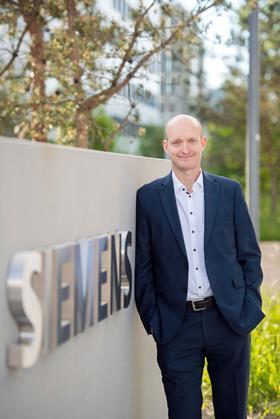
We are all aware by now that a slew of global megatrends are reshaping our legacy industries, and the railway sector is no exception. These trends are especially apparent in the servicing segment of the market, where digitalization in particular is radically changing established business models and decades old business practices.
Leading the change are the major suppliers, typified by Siemens Mobility. For a start, more and more rail assets are being managed under a whole-life or third-party model, including rolling stock. Traditionally, the big state incumbent railways maintained their trains from various suppliers, or even in-house state manufacturers, at their own depots with their own staff.
Yet the rising complexity of modern trains and the liberalization of many passenger rail markets — at least in Europe — means fleets will increasingly be used by multiple operators over their life, and maximizing their availability has become a priority for manufacturer and operator alike.
The Siemens Mobility depot in Dortmund typifies this cutting-edge approach. Developed from scratch to support the roll-out of the company’s Desiro HC regional EMUs for the RRX passenger network linking towns and cities across northwestern Germany, the Dortmund hub is managed by Siemens and embodies a digitally led maintenance philosophy. However, as Elmar Zeiler, CEO for Customer Services at Siemens Mobility, explains, the Dortmund depot is just one example of the company’s increasingly mature digitalization drive in servicing and maintenance.

‘We have fully digitalized processes for decision support’, he says. ‘The trains were supply now are fully connected, they provide us with status reports and real-time data. To that we can add algorithmic analysis, and increasingly we are deploying automation to help sift through all this information.’ This in turn is supporting a shift in the overall approach to train maintenance.
‘We take this information and transition from a static maintenance interval to a condition-based and predictive maintenance interval. This allows us to analyze the information and realize, for example, that a train was used less often than others or it was running on maybe areas where the wear and tear was significantly less than compared to others,’ he explains. ‘It’s really important to understand the health of any asset.’
But equally essential to support this shift in approach is the buy-in of the operator or asset owner, and here Siemens Mobility Rail Services is keen to stress the power of choice for the customer. This is the philosophy the business has adopted through its Railigent X application suite. ‘The power of choice’ means that the customer can decide what digital tools they already have, and what they need to complete their system. It could be end-to-end support suite deployed in applications right out of the box, insights through computational patterns and algorithms, or pure asset data as input for their existing IT tools.
‘Railigent X is an open suite that provides access to all of our digital solutions. In the end, the customers can utilize the data of their systems to take the best decisions’, Zeiler emphasizes.
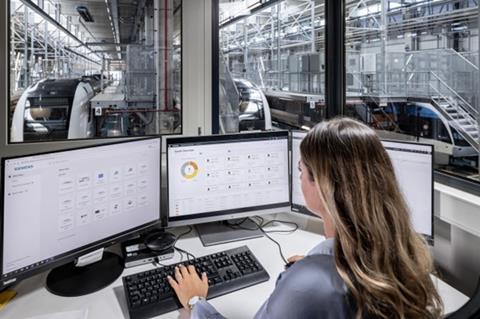
‘Always on’ connectivity
Zeiler says that Siemens Mobility has taken a conscious decision to adopt a digitally connected approach to all of its products.
‘We want all of our products to be connected’, he insists. ‘It’s a decision you either take or you don’t take. But we have clearly said that we want connectivity for all of our assets. And we believe that this connectivity will become increasingly important in improving both the availability and reliability of all of our assets, whether it’s rolling stock or infrastructure.’
This connectivity is delivered by whatever data transmission networks are available in a given environment, he explains. This could be a download of data at the end of the day when a train returns to depot, or it could be real-time communication provided by station wi-fi or mobile networks. He anticipates that realizing true real-time condition monitoring will get easier as telecoms technology such as 5G gets more widely adopted in the rail sector, driven by pan-industry programs like FRMCS.
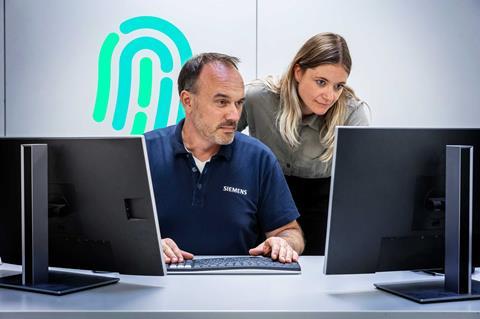
Standardization imperative
However, there is a need for caution: Zeiler acknowledges that cybersecurity in particular is a growing concern in an increasingly volatile geopolitical environment. This in turn is influencing Siemens Mobility’s attitude to product development and standardization. ‘We are putting in a lot of effort to make our systems IT secure. It’s a huge task and we can only do it for standard systems’, he says.
The result is that Siemens Mobility will continue to work globally by offering what it calls a ‘platform approach’ of similar designs for its products, with customer-specific tailoring only where necessary — he cites the example of Britain’s cramped vehicle loading gauge and the challenge this poses in developing battery or hydrogen-powered trainsets.
‘Clearly we work in many different global markets with many different regulatory requirements’, Zeiler adds. However, he feels that ‘rail is getting more complex’ and this means the company ‘needs a clear platform strategy based on scaling up’ products and technologies. While different markets may require different approaches in terms of the cost a customer can support, Zeiler is clear that the company ‘cannot develop separate digital tools for every country’.
Managing the life-cycle
Another complexity of the digitalization drive is managing the highly contrasting life-cycles of software-based components and railway hardware. A typical regional train can be expected to last around 35 years in service, yet in the technology world even two years would be considered a long lifespan.
To mitigate this risk, Zeiler believes that rolling stock designers n particular must put the architecture of vehicles at the forefront of their minds.
This means that the fundamental electronics of a vehicle must be ready to last 20 years, without succumbing to dependency on a particular supplier of a given chip, he says. At the same time, vital and non-vital systems need to be increasingly separated so that components such as information monitors or onboard phone chargers can be swapped out easily over the lifespan of the train as consumer trends evolve.
‘In order to be prepared for whatever developments there are, you need to keep the system separate and you need to be able to basically rip it out and add a new one, without having to worry about any safety or any homologation aspects. It’s purely cosmetic, and the trick is to have the right architecture there from the beginning and then you can manage these two streams completely separately’, he explains.
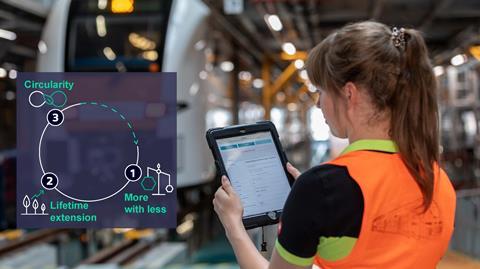
Recycle and reuse
The use of digital tools to help deliver longer maintenance intervals is also driven by tour principle ‘do more with less’, Zeiler feels. ‘We at Siemens Mobility understand that sustainability is a crucial topic in today’s society. In particular, it has increasing importance in the transport industry, including rail. As a global leader in sustainability, we are dedicated to expanding our sustainable lifecycle services to meet the needs of our customers.’
Sustainability goals are set for the entire business. ‘Using fewer spares is an example of how we can meet these goals’, Zeiler says. But another critical element is reuse of equipment or components, which is emerging as a key principle in reducing reduce carbon emissions, waste and water, and embracing circular economy methods throughout the entire lifecycle of the Siemens Mobility’s products and services.
Noting that ‘reuse is not the same as recycling’, Zeiler says that there are plenty of examples of components that are removed from a train during maintenance and which, after repair, are suitable for reusing .
The emergence of alternative traction technology such as battery power is likely to push even more attention towards this area, given the complexity of recycling batteries and their constituent ingredients.
‘We are looking more and more at ways by which we can take back equipment and subsystems’, Zeiler reports. ‘We don’t replace them entirely, instead we look how we can repair them and give them an extended life. This becomes especially important when you look at new technologies like batteries. There are hundreds of cells into one of these battery modules, but usually only the individual cells are failing, not the whole battery.’
He suggests that ‘90% could be perfectly fine, but the rest have issues that you have to react to’. Repairing or replacing the damaged cells can restore a satisfactory level of power output from the battery, at a much lower cost — both financial and environmental — than procuring an entire powerpack.
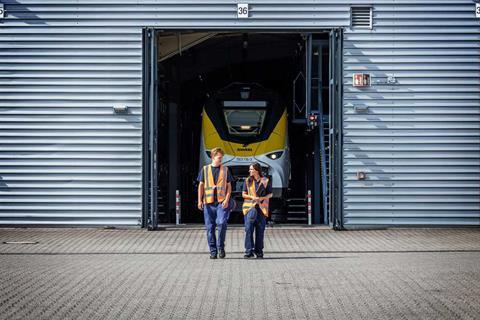
Depot activities are also being adapted to improve sustainability; at sites run by Siemens Mobility, we are constantly optimizing our maintenance processes and equipment, for example train washing plants are being fitted with an ‘eco-mode’ that halves the time required to clean a typical trainset, saving substantial amounts of water.
Zeiler also says that monitoring the condition of key components can be a major benefit to sustainability. Siemens Mobility’s asset management strategy seeks to optimize maintenance and operations over the entire lifespan. ‘Take an aluminum carbody for example’, he says. ‘The carbon footprint of producing the aluminum is very high, so there is a clear case not to replace aluminum bodied vehicles unless absolutely necessary. By modernizing, repairing, upgrading, and refurbishing existing rolling stock and infrastructure assets, we are able to extend their lifespan while significantly reducing the consumption of natural resources and the creation of excess waste.’
Siemens Mobility Services is currently renovating a batch of light rail vehicles from Stuttgart at its Wildenrath-PCW test center to add 20 more years of life, Zeiler adds. Reflecting this ‘refurbish and reuse’ aim to reduce waste and promote efficient material use, Siemens Mobility has introduced an online repair and resale service on their e-commerce platform MoBase.
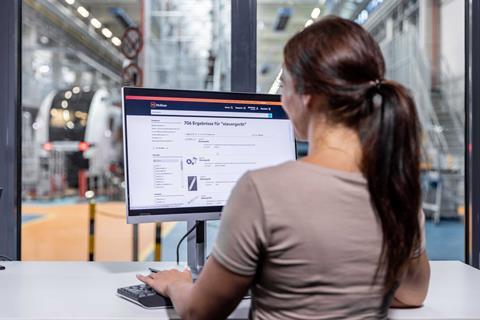
MoBase is a one-stop shop for railway products and solutions. The platform brings together buyers and sellers into a single marketplace where third-party vendors are also able to sell their products. ‘Internally, we always say it’s kind of like Amazon. Again, it’s an open platform —you can simply choose from over 350,000 available products you want. Through MoBase, specific Repair Services can be directly commissioned by service providers with fixed prices for specific work orders clearly visible and always up to date.
‘After a successful order on MoBase, the repair process is handled directly by the customer who is in direct contact with the service provider. This requires minimal effort and helps to conserve valuable resources while avoiding costly new production and waste. With MoBase Resale, everything that is no longer needed can be sold, and surplus products are used responsibly. We want to use these approaches to contribute to the circular economy’, he concludes.

















